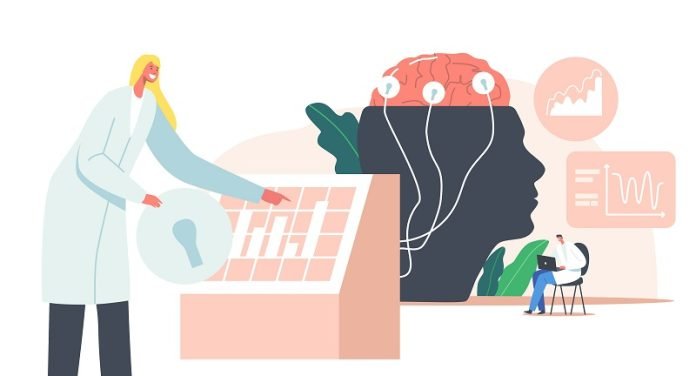
As you travel your usual route to work or the grocery store, your brain uses cognitive maps stored in your hippocampus and entorhinal cortex.
These maps help you navigate by recalling paths and locations you’ve been to before.
New research from MIT has found that these mental maps are also created and activated when you merely think about a sequence of experiences, even without physical movement or sensory input.
This study, led by MIT’s Mehrdad Jazayeri and published in Nature, is the first to show how mental simulation and imagination work in the brain’s cognitive maps, particularly in a nonspatial domain.
The research team, including lead author Sujaya Neupane and co-author Ila Fiete, discovered that the entorhinal cortex creates a cognitive map of experiences animals have while using a joystick to navigate through a sequence of images.
These maps are activated when the animals think about these sequences, even if the images are not visible.
“These cognitive maps help perform mental navigation without any sensory input or motor output. We can see a signature of this map as the animal mentally goes through these experiences,” says Jazayeri, an associate professor of brain and cognitive sciences at MIT.
Previous studies have shown that physical location representations are stored in the hippocampus and the nearby entorhinal cortex.
These representations are activated when an animal moves through a space it has been in before or even when it is asleep.
Jazayeri and his colleagues wanted to explore whether these cognitive maps are also built and used during purely mental run-throughs or imagining movements through nonspatial domains. To test this, they trained animals to use a joystick to trace a path through a sequence of images spaced at regular intervals.
During training, the animals were shown only a subset of image pairs. After learning the pairs, the researchers tested the animals with new pairs they had never seen before.
If the animals had not formed a cognitive map, they would struggle with the new pairs. However, if they relied on a cognitive map, they should be able to navigate the new pairs successfully.
“The results were clear,” says Jazayeri. “Animals could mentally navigate between the new image pairs from the very first test. This strong behavioral evidence indicates the presence of a cognitive map.”
The researchers recorded single neuron activity in the entorhinal cortex as the animals performed the task. They found distinctive bumps of activity associated with the mental representation of the images.
The brain went through these activity bumps at the expected times, corresponding to when the images would have appeared, even though they never did.
“The timing between these bumps matched exactly the timing the animal would expect to reach each image, which was 0.65 seconds,” Jazayeri explains.
To understand how these cognitive maps work, the researchers built a computational model to mimic the brain activity they observed. They used a continuous attractor model, originally developed to model how the entorhinal cortex tracks an animal’s position based on sensory input.
They customized the model to learn activity patterns generated by sensory input and then use those patterns to reconstruct experiences later, without sensory input.
“The key element we added is that the system can learn bidirectionally through associational learning, which allows it to recreate sensory experiences,” Jazayeri says.
The researchers now plan to investigate how the brain responds if landmarks are not evenly spaced or if they are arranged in a ring. They also hope to record brain activity in the hippocampus and entorhinal cortex as animals learn the navigation task for the first time.
“Seeing how the memory of a structure becomes crystallized in the mind and how that leads to neural activity is a valuable way to understand how learning happens,” Jazayeri concludes.
If you care about brain health ,please read studies about Vitamin B9 deficiency linked to higher dementia risk, and cranberries could help boost memory.
For more information about brain health, please see recent studies about heartburn drugs that could increase risk of dementia, and results showing this MIND diet may protect your cognitive function, prevent dementia.



